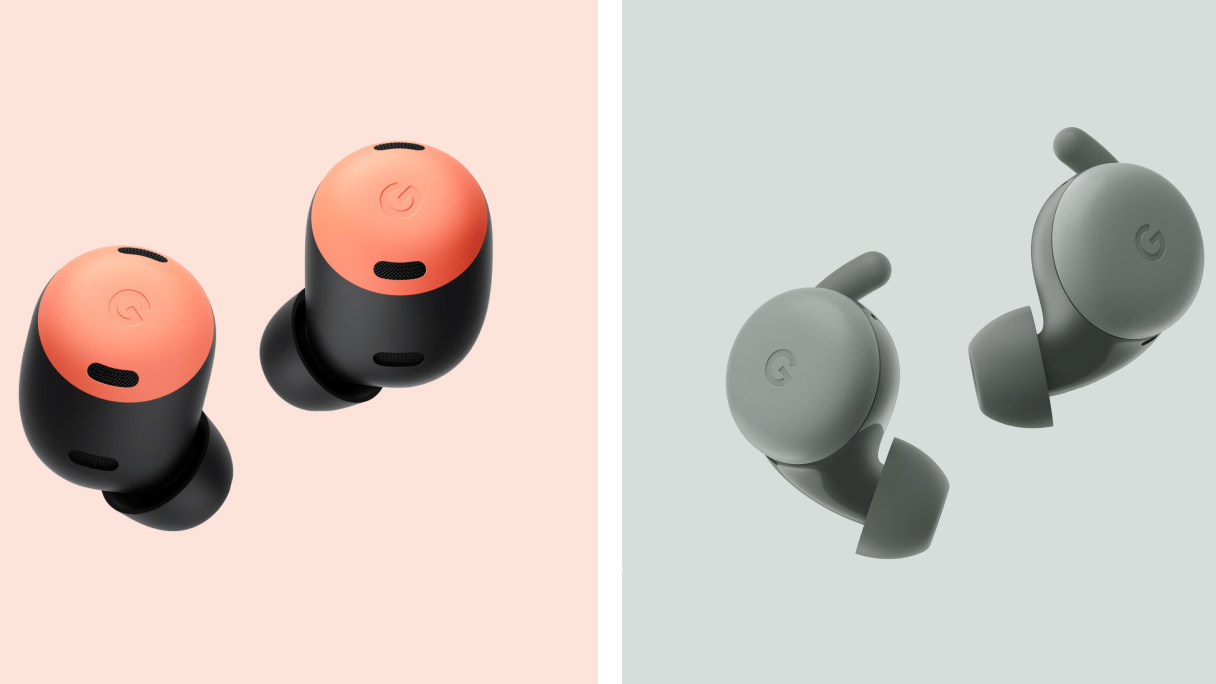Google Pixel Buds Pro must keep their predecessor's most underrated feature
It's all about touch

I want the Google Pixel Buds Pro. Announced on stage at Google IO 2022, the new buds introduce active noise cancellation (ANC) and updated design over their predecessors.
While I welcome these advancements, there's one feature from the previous buds the Buds Pro need to carry over.
The 2020 Pixel Buds and their affordable follow-ups, the Pixel Buds A, may not be the most buds on the market, they're not the best true wireless earbuds you can buy, but they do get one thing right. Touch controls.
I've tried and tested a multitude of earbuds over the years, from big brands including Apple and Samsung, to the relative unknowns by Enac and Earfun. But one thing that stood out about the Pixel Buds was how effortless their touch and tap controls were.
Rekindling the connection
It's been a year or so since I've used the Pixel Buds - my current daily buds are the Razer Hammerhead Pro - but just recently 2021's Pixel Buds A finally came across my desk as we rotated some devices in the TechRadar office.
The Buds A are a more affordable version of 2020's Pixel Buds, which means they miss out on a couple of features from the original, including swipe volume control and a wirelessly charging case.
Neither are particular deal breakers in my book, so long as Google managed to retain the intuitive tap and touch controls. And the good news is, it did exactly that.
Just a few hours into using the Pixel Buds A and the touch controls were already putting the Hammerhead Pros to shame. Single tap to play/pause, double tap to skip a track, triple tap to go back a track.
And while the A-series buds do miss out on the volume swipe action, we know the handy gesture will return for the Pixel Buds Pro.
Will the Buds Pro deliver?
The Pixel Buds Pro we announced on May 11, but they won't hit stores until July 28 and that long lead time between reveal and on-sale has meant Google hasn't seeded the buds to anyone yet, so right now we don't know for sure if they'll live up to the billing.
And on paper, the billing is looking good. Google claims the Pixel Buds Pro will offer up to 31 hours of battery life (without ANC), a wirelessly charging case, transparency mode, active noise cancellation and yes, touch controls.
The product page for the earbuds reads "control media and calls with a simple tap, swipe to adjust the volume level and touch and hold for Active Noise Cancellation."

I do have one small cause for concern however, and that's over the size of the touch surface on the buds. From the side-by-side pictures, it appears that the surface area on the Buds Pro may be smaller than on the Pixel Buds and Buds A.
Google hasn't revealed dimensions for its new earbuds, so I'll have to wait for the TechRadar review unit to arrive to find out if there is a difference. My worry is that a smaller surface area means less of a target to hit consistently, and with the added ANC components stuffed inside the buds, the touch area may be compromised.
But for now, I'm keeping faith Google will be able to deliver the excellent touch control experience from the Pixel Buds (2020) on its latest offering, which also boasts an Apple AirPods Pro-busting $199/£179/AU$299 price tag.
While the iPhone has the AirPods Pro, every Android phone may soon have an equally capable competitor which are even easier to control. Game on.
Get daily insight, inspiration and deals in your inbox
Sign up for breaking news, reviews, opinion, top tech deals, and more.

TechRadar's former Global Managing Editor, John has been a technology journalist for more than a decade, and over the years has built up a vast knowledge of the tech industry. He’s interviewed CEOs from some of the world’s biggest tech firms, visited their HQs, and appeared on live TV and radio, including Sky News, BBC News, BBC World News, Al Jazeera, LBC, and BBC Radio 4.